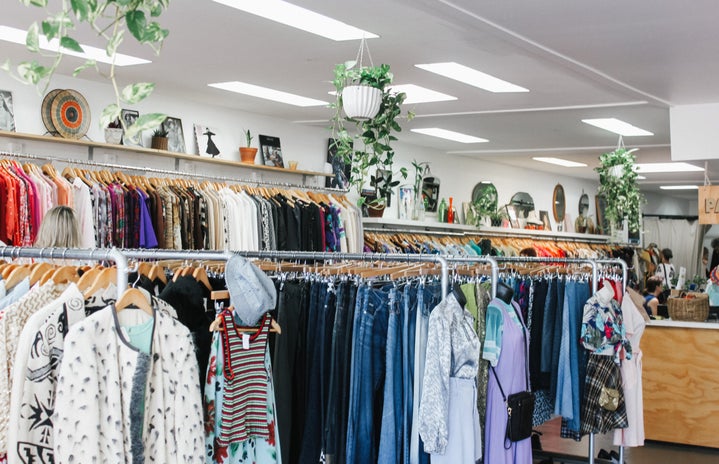While technology advances, so do the methods we use to create items. The innovation that is occurring in the twenty-first century is amazing, but what is it really costing us?
In the fashion world, technological advances have allowed us to create clothing pieces faster than ever before. This new phenomenon is known as fast fashion. Fast fashion is the mass production of disposable, cheap clothing. New clothes are being produced at faster rates than ever before, and it encourages consumers to keep buying more and more. Fast fashion has encouraged major companies to make clothing the cheapest way they possibly can in order for them to make the most of their dollar.
With all the positive things that have come with the new technology in the fashion industry, there have been many negative things as well. The new phenomenon of fast fashion has negatively impacted the way items are produced, and the lives of the people that create the clothes. Many examples of the negative impacts on the garment workers are the Triangle Shirtwaist Factory fire, Rana Plaza building collapse and their living conditions.
The Triangle Shirtwaist factory would be one of the major symbols of the problems in the fashion industry. The Triangle factory was owned by Isaac Harris and Max Blanck. The factory was on the top three floors of the Asch Building in Manhattan. It employed young immigrant women. They had to work on a cramped factory floor, with rows and rows of sewing machines. Most if not all of the workers were teenage girls who barely spoke English. They worked for 12 hours a day, all day, every day. The building had four elevators that would go up to the top three floors, but only one of them was working. There were two stairways that led down to the street, but one of the doors was locked from the outside. The other door only opened inward. In 1911, a fire broke out at the factory, and the women were trapped inside. There was no way they could escape the factory walls. This would be the first of many disasters to occur in the fashion industry due to greedy and corrupt businesses that only cared about how they could produce the most clothes for the cheapest price.
In recent years another disaster hit the fashion industry. This was the Rana Plaza building collapse. Rana Plaza was an eight-story building outside of Dhaka, Bangladesh. Five garment factories were housed in this building. They supplied clothes for major companies in The United States, Spain, Italy, United Kingdom, Germany and Denmark. In 2013, the building collapsed. It killed 1,132 people and injured 2,500 other people. The workers were forced to work in the building, even after they voiced their concerns about the cracks forming in the walls and the noises that were coming out of them. This tragedy has since become a symbol of the negative impact that the fashion industry is having on the world.
Garment workers have been underpaid and overworked for years on end. They are often forced to work 14 to 16 hours a day— every day of the week. During high-demand times, they work until all hours in the morning to make sure that the clothes are finished in time. Their wages are so low, that if they are offered overtime they have to take it. Even if they do not want to take it, they would most likely be fired. At the Triangle factory, the women were only paid $15 a week, even though they worked 12 hours a day.
The International Ladies Garment Workers Union held a strike in 1909 to protest for higher pay for garment workers. Harris and Blanck were part of a few manufacturers who resisted. They even went as far as hiring the police to stoke the women, and they paid off politicians to turn a blind eye. The Rana Plaza collapse really turned the world’s attention to the garment industry in Bangladesh. The garment industry in Bangladesh is the lifeline for women there, but it has also cost them so much. Most workers did, and do not receive fair wages and working conditions. Many of the women have to live in houses altogether. They leave their families behind to try to make money, but they just end up in worse conditions than before.
Fast fashion has negatively impacted the way items are produced, and the lives of the people that create the clothes. Since the Rana Plaza collapse in 2013, there have been more than 109 “accidents.” At this point, can we call these accidents? We know that the conditions of the garment factories are not suitable for a work environment.
We need to start making changes today because it is only going to get worse if we do not advocate for change now. If we simply paid garment workers 1 percent more, that would be enough for them to make a livable wage.

